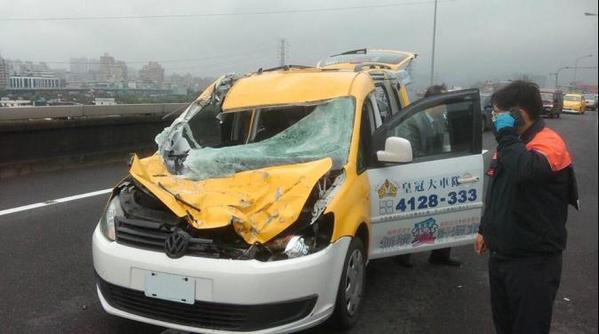Aviation
Captain of a TransAsia Airways ATR mistakenly switched off the plane’s Engine

Taiwan’s Aviation Safety Council reported that this week’s crash ofTransAsia Airways flight 235 may have been a result of the aircraft losing power in both engines. However, only one of them failed.
“The first engine experienced a problem 37 seconds after take-off at 1,200 feet,” Aviation Safety Council director Thomas Wang told the press.
Black box data shows that the ATR-72-600 turboprop airliner’s rightengine failed, which triggered a warning in the cockpit, Deutsche Welle reported. But the aircraft’s functioning left engine was manually shut down. Wang told the media that it is “unclear” why this happened.
https://www.youtube.com/watch?v=gDqkW2iuWwc
The pilots then attempted to restart the engine but couldn’t.
The TransAsia plane struck a bridge before crashing into a river.When an engine fails on a turboprop, such as the 9-month-old ATR involved in the crash, the propeller on that engine goes into an “auto feather” mode. This reduces drag and disturbance to aircraft – basically, enabling it to continue flying.
According to Mark, modern turboprop airliners are designed to fly on just one engine. Even in emergency situations, the technology on board the aircraft should allow the pilot to get it out of trouble, he added.
Authorities reported that of the 58 people on board the TransAsia flight, more than 30 have been killed and many more are still missing. (Source : Business Insider)
On 6 February, investigators revealed that the left engine, which does not appear to have had suffered a malfunction, had been manually shut off, while cautioning that it was “too early to say if human error was a factor”. Investigators released the following preliminary sequence of events. All times are local (UTC+8).
- 10:51:13 — Crew receives take-off clearance
- 10:52:34 — Tower asks crew to contact Taipei Departure
- 10:52:38 — Right engine failure alert; master warning sounds for 3s
- 10:53:04 — Crew reduces power to the left engine
- 10:53:12–18 — Stall warning sounds
- 10:53:24 — Crew cuts power to the left engine
- 10:53:34 — Crew declares emergency: “Mayday, mayday, engine flameout”
- 10:54:09 — Crew calls for restarting the left engine multiple times
- 10:54:20 — Left engine is restarted
- 10:54:34 — Master warning sounds again
- 10:54:35 — An unidentified sound is heard
- 10:54:36 — Recordings end


According to an initial analysis of the plane’s flight data recorders, authorities said one of the plane’s engines went idle 37 seconds after the aircraft took off from Taipei Songshan Airport. ASC authorities also said the pilot made a “mayday” call and announced a flameout 35 seconds after noticing an engine failure. However, the CAA confirmed that Taipei International Airport’s control tower did not hear the “mayday” signal.
The ASC issued an interim report on 2 July. Without assigning responsibility for the crash, the report confirmed that after the failure of one engine the pilot pulled back the wrong throttle, shutting down the other, working engine. It also said that the pilot in command, Liao Chien-tsung, failed simulator training in May 2014. The ASC is expected to publish its final report in April 2016, with a draft version in November 2015

Aviation
Boeing, Antonov to Collaborate on Defense Projects

– MOU represents Boeing’s commitment to work with Ukrainian industry
– Includes exploring opportunities for collaborating on in-country support of Unmanned Aerial Systems
A Memorandum of Understanding was signed today by Boeing and Antonov Company to investigate potential collaboration on defense-related projects.
“We’re happy to keep collaborating with the Antonov Company to help Ukraine’s economic development and expansion,” stated Ted Colbert, CEO and president of Boeing Defence, Space, & Security.
Airbus and the Antonov An-225: The Best Partnership:Click here
“This agreement demonstrates our ongoing efforts to find more opportunities to work with Ukrainian industry, which was underscored by our signing of the Ukrainian Defence Industry Compact earlier this year.”
The areas of potential collaboration identified in the agreement consist of training, logistical support and overhaul services for tactical Unmanned Aerial Systems utilized by the Ukrainian Armed Forces, which includes the ScanEagle. In addition, the companies will also explore opportunities for Antonov to provide engineering support to Boeing.
The six largest cargo aircraft ever built in the aviation industry:Click here
“A strong, innovative, and efficient defense industry is key to sustainable economic development and national security, and we are extremely excited to collaborate with Boeing,” said Ievhen Gavrylov, CEO of Antonov Company.
This agreement brings a whole new level of opportunity to implement the latest and most effective solutions – in addition to the possibility of future projects with Boeing in the aerospace and defense industry.”
-

 Travel1 week ago
Travel1 week agoAir India to Expand US Operations with Three New Routes After a Decade
-

 Travel2 weeks ago
Travel2 weeks agoWhy We Should Avoid These Stamps in a Passport
-

 Airlines1 month ago
Airlines1 month agoInvestigations Reveal Fake Chinese Titanium in Boeing and Airbus Jets
-

 Tech4 weeks ago
Tech4 weeks agoChina’s CATL Plans 1,800-Mile Electric Plane Launch by 2027
-

 Airport3 days ago
Airport3 days agoTop 10 Largest Airports in the World by Size
-

 Aerospace4 weeks ago
Aerospace4 weeks agoChina’s Fighter Jets Turn Wings into Autonomous Drones
-

 Airlines4 days ago
Airlines4 days agoAir India Rolls Out A350s for Delhi-New York JFK and Newark Routes
-

 Defence3 weeks ago
Defence3 weeks agoBoeing Enhances Chinook with New Engines and Block II Upgrades at $96 Million







